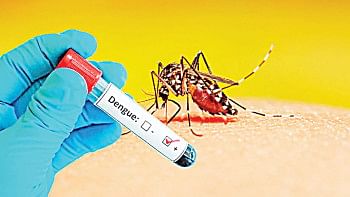Import of soymeal, key feed ingredient, on the decline
The rise in soybean import and domestic production has largely displaced the import of soymeal, a key ingredient to make feed for poultry, livestock and aquaculture, said the US Department of Agriculture.
Soymeal import, which was 4.58 lakh tonnes in fiscal 2015-16, is estimated to decline by over 23 percent to 3.50 lakh tonnes this fiscal year and to 3.25 lakh tonnes the following year.
On the other hand, domestic soymeal production is likely to increase 8.5 percent to 10.2 lakh tonnes in fiscal 2017-18, driven by the increased demand from the feed industry.
“Strong soybean imports and domestic production have enabled soybean crushing plants to increase soymeal production,” the USDA said, adding that the production of soymeal would be 9.40 lakh tonnes in fiscal 2016-17.
The agency said imports are expected to rise 2.40 percent to 11.5 lakh tonnes in fiscal 2016-17 on strong demand in the crushing industry.
Soybean imports may rise 2.17 percent to 11.7 lakh tonnes next year, riding on strong demand from the crushing industry and for soybean oil, it added.
“Since 100 percent of the imported soybean is crushed to produce meal and oil, the surge in soybean imports has largely displaced the import of soymeal,” the USDA said.
Bangladesh has a couple of seed-crushing plants established by edible oil giants City Group and Meghna Group of Industries. The plants can crush 7,000 tonnes of seeds daily. Another crushing plant is being set up by Globe Pharmaceutical Group of Companies to extract edible oil and oilcake, according to its Chief Finance Officer Shaker Shamim.
With the entry of the new player, the country's oilseed crushing capacity will rise to more than 8,000 tonnes a day, which will help the burgeoning feed industry get higher supply of oilcake, said stakeholders.
Soybean meal consumption by the feed industry would rise to 12.50 lakh tonnes at the end of the fiscal year, according to the USDA. It is expected to grow 8 percent to 13.5 lakh tonnes in fiscal 2017-18.
Some 100 fully automated feed mills and 45 small and medium feed mills produce 72.6 lakh tonnes of feed for the livestock sector, including poultry, cattle and aquaculture, it said.At present, the total number of poultry farms stands at 65,000-70,000 and is growing at 15 percent a year.
There are about 20 lakh aquaculture farms and the area under production is increasing at 5.7 percent a year. “The investment in the poultry sector is increasing as the sector ramps up to reach capacities needed to drive exports,” the USDA said.
The tariff hike in the current fiscal year favoured the crushing of whole beans in Bangladesh. “The tariff on soymeal will likely lead to the establishment of three more crushing plants soon.”
The US agency said the Bangladesh government has an open trade policy for soybean and soybean oil. “This duty-free policy for soybeans is intended to support the local crushing industry to ensure a local supply of soymeal at a lower price.”
But since the duty on soymeal has stifled imports, feed millers are seeing increased costs for soymeal as a result of collusion and price-fixing among the leading domestic seed crushing plants, the USDA added.
The feed industry requires nearly 16 lakh tonnes of oilcake or soybean meal a year, said Moshiur Rahman, president of Feed Industries Association Bangladesh.
The establishment of seed crushing plants has reduced imports of soybean meal but feed millers still have to meet nearly half of their requirements through imports.
More seed crushing mills should benefit the local feed mills but the prices should be competitive, Rahman said, citing that prices of soybean meals rose couple of days before the government hiked duty on the feed ingredient to 10 percent for fiscal 2016-17.
As a result of the duty hike, the import cost for each kilogram of soymeal is Tk 4 higher than the prices of soymeal offered by local seed crushers.
But, the imported soymeal provides 6 percentage point higher protein than the locally crushed one, he added.

 For all latest news, follow The Daily Star's Google News channel.
For all latest news, follow The Daily Star's Google News channel. 



Comments